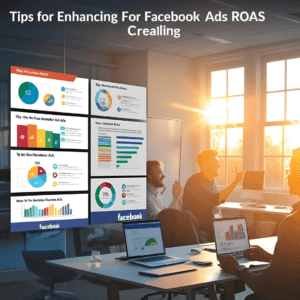Table of Contents
- Introduction
- Why Optimizing Product Pages Matters
- Key Elements of a High-Converting Product Page
- SEO Best Practices for Product Pages
- Enhancing E-commerce UX for Better Conversions
- Real-Life Examples of Successful Product Pages
- Conclusion
- FAQs
When it comes to e-commerce, your product pages are where the magic happens—or where it falls flat. Imagine walking into a beautifully arranged store where every product shines and practically invites you to take it home. Now, translate that experience to your online store. The secret sauce? Learning how to optimize product pages for higher conversion rates. In this guide, we’ll walk you through proven strategies to help turn your visitors into buyers, using a mix of SEO, e-commerce UX, and conversion rate optimization techniques.
Why Optimizing Product Pages Matters
Why should you put in the effort to optimize your product pages? Simple: It’s where browsing meets buying. A well-optimized product page not only attracts traffic through product page SEO but also guides potential customers seamlessly through the buying journey. In fact, a study by BigCommerce revealed that optimized product pages could boost conversion rates by up to 30%!
Key Elements of a High-Converting Product Page
A successful product page is a blend of aesthetics and functionality. Here’s what you need to focus on:
- Clear Product Titles: Use keywords but keep it natural.
- Detailed Descriptions: Answer potential questions before they’re asked.
- High-Quality Images: Show products from multiple angles.
- User Reviews: Build trust with authentic customer feedback.
- Compelling CTAs: Make the next step clear and irresistible.
SEO Best Practices for Product Pages
When optimizing product pages for SEO, focus on:
- Keyword Research: Use tools like SEMrush or Ahrefs to find relevant keywords such as “best product page design for mobile users.”
- On-Page SEO: Include primary and secondary keywords naturally in your titles, meta descriptions, and alt text.
- Technical SEO: Ensure fast page loading times and mobile responsiveness.
- Internal Linking: Guide users to related products or helpful content.
Enhancing E-commerce UX for Better Conversions
Did you know that 88% of online shoppers are less likely to return to a site after a bad experience? Here’s how to keep them coming back:
- Streamline Navigation: Avoid clutter and keep menus simple.
- Mobile Optimization: With over 50% of traffic coming from mobile, a responsive design is non-negotiable.
- Personalization: Use AI-driven tools to suggest products based on browsing behavior.
Real-Life Examples of Successful Product Pages
Take a page from companies like Zappos, where detailed product descriptions and customer reviews play a huge role in conversions. Or look at Amazon, where strategic use of bullet points and high-quality images drive sales.
Conclusion
Optimizing product pages for higher conversion rates isn’t just a one-time task but an ongoing process. By focusing on elements like persuasive product descriptions, high-quality visuals, seamless UX, social proof, and solid SEO practices, you can transform casual browsers into loyal customers. At AdyCircle, we specialize in helping e-commerce brands elevate their digital marketing strategies and achieve tangible results. Ready to boost your conversion rates? Let’s get started today!
FAQs
An optimized product page includes a compelling product description, high-quality images and videos, a clear call-to-action, customer reviews, and proper SEO elements.
Focus on user experience, ensure fast loading times, use persuasive language in descriptions, and leverage social proof like customer reviews.
SEO helps increase organic traffic to your product pages, making them more visible to potential customers searching for relevant products.
With a significant portion of online shoppers using mobile devices, a mobile-optimized product page ensures a seamless shopping experience and can reduce bounce rates.
Regularly update product pages to keep content fresh, add new reviews, update product descriptions, and optimize for new SEO trends.





